Introduction
In the realm of precision manufacturing, where aesthetics and functionality converge, the surface finish of a component plays a pivotal role. Brass, with its golden luster and impressive mechanical properties, has emerged as a preferred choice for many applications. However, achieving the desired surface finish often requires meticulous methods. Enter sandblasting – a technique known for its ability to refine surfaces through abrasion. But can this method be harnessed effectively for brass? To answer this, we must first explore the nature of brass and the intricacies of the sandblasting process.

Understanding Brass: Composition and Properties
Brass, an alloy renowned for its malleability and acoustic properties, is composed of varying ratios of brass and zinc. This unique composition lends brass its distinct color and makes it a favored material in musical instruments, decorative items, and mechanical parts. The properties of brass, including corrosion resistance and thermal conductivity, add to its appeal.
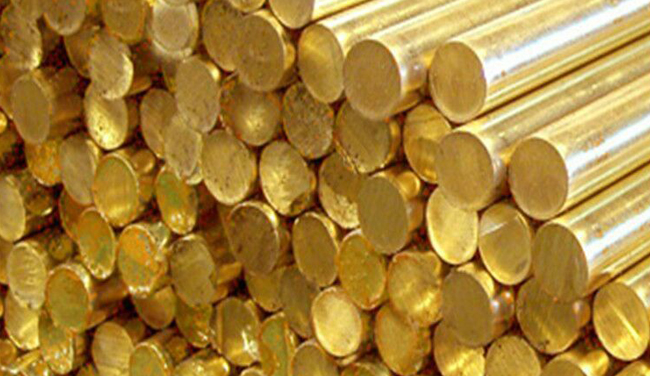
What is sandblasting?
Sandblasting, also known as abrasive blasting, involves propelling fine particles at high velocity onto a surface to alter its texture or prepare it for further treatment. This technique is widely used to remove rust, paint, and contaminants from surfaces. While sand was traditionally the abrasive medium, modern variations utilize various media like aluminum oxide, glass beads, and steel grit.
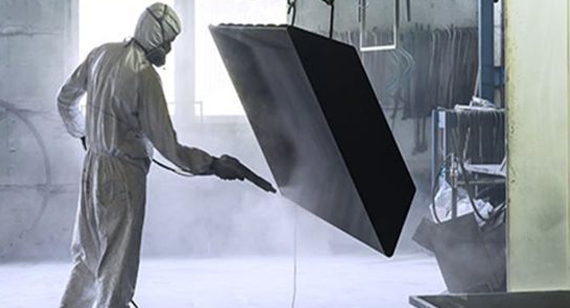
How to clean brass CNC parts for a sandblasted finishing?
Brass, a versatile and aesthetically pleasing material, often requires thorough cleaning before undergoing sandblasting for surface treatment. Sandblasting can enhance the texture and appearance of brass components, but proper cleaning is crucial to ensure optimal results. In this guide, we’ll walk you through the steps to effectively clean brass parts before sandblasting, ensuring a successful surface treatment process.
Before embarking on the sandblasting journey to achieve a refined surface finish for your brass parts, it’s essential to start with a clean canvas. Cleaning the brass parts effectively prepares them for sandblasting, allowing the abrasive particles to interact optimally with the surface.
Importance of Cleaning Before Sandblasting
Cleaning brass parts before sandblasting is vital for several reasons. Firstly, surface contaminants such as dirt, dust, oils, and oxidation can hinder the sandblasting process and prevent the abrasive media from achieving desired results. Secondly, the presence of contaminants can lead to uneven sandblasting and affect the consistency of the final surface finish. By thoroughly cleaning the brass parts, you create an ideal foundation for successful sandblasting.
Gathering the Necessary Equipment
Before you start the cleaning process, ensure you have all the necessary equipment ready. This may include gloves, safety goggles, brushes, soft cloths, a mild cleaning solution, a degreasing agent, and access to clean water for rinsing.
Initial Inspection and Assessment
Begin by inspecting the brass parts for any visible contaminants, such as dirt, dust, or residue. Assess the overall condition of the parts to determine the extent of cleaning required.
Removing Surface Contaminants
Use a soft brush or compressed air to remove loose dirt and dust from the brass surface. Be gentle to avoid scratching the material. This initial step helps prevent these contaminants from becoming embedded during the cleaning process.
Degreasing the Brass Parts
Brass parts are prone to accumulating oils and grease from handling and manufacturing processes. Applying a suitable degreasing agent helps remove these contaminants, ensuring the surface is clean and ready for sandblasting.
Choosing the Right Cleaning Solution
Select a mild cleaning solution that is safe for brass. Avoid harsh chemicals that could potentially damage the material. A mixture of warm water and a mild dish soap or specialized brass cleaner can be effective.
Applying the Cleaning Solution
Dampen a soft cloth or sponge with the cleaning solution and gently wipe down the entire surface of the brass parts. Pay extra attention to areas with visible residue or stubborn contaminants. Avoid using abrasive materials that could scratch the brass.
Rinsing and Drying the Brass Parts
After cleaning, rinse the brass parts thoroughly with clean water to remove any traces of the cleaning solution. Ensure that no soapy residue remains on the surface. Once rinsed, use a clean, dry cloth to pat the brass parts dry. Avoid air-drying, as this can lead to water spots.
Inspecting the Cleaned Brass Surface
Take a moment to inspect the brass parts after cleaning. They should appear clean, free of oils, and ready for the sandblasting process. Any remaining contaminants or spots should be addressed before proceeding.
Conclusion
Effectively cleaning brass parts before sandblasting is a crucial step in achieving a successful surface treatment outcome. By removing contaminants and ensuring a pristine surface, you pave the way for the abrasive particles to create the desired texture and finish. Remember that proper cleaning sets the stage for a remarkable transformation through sandblasting.
Is it better to use soda blasting or sandblasting brass CNC machining parts? Which one is cheaper?
When it comes to surface treatment options for CNC machined brass parts, both soda blasting and sandblasting are popular choices. These methods offer distinct advantages and considerations in terms of efficiency and cost. In this comparison, we’ll explore the merits of each technique to help you make an informed decision based on your project requirements and budget.
CNC machining produces intricate brass parts that often require surface treatment to meet specific functional and aesthetic demands. Soda blasting and sandblasting are two viable approaches, each with its own set of benefits and drawbacks.
Understanding Soda Blasting
Soda blasting involves propelling sodium bicarbonate particles at high velocity onto a surface to clean and refine it. It’s a gentler method compared to traditional sandblasting and is often used when preserving delicate details is crucial. Soda blasting is non-abrasive and does not create significant surface roughness.
Exploring Sandblasting
Sandblasting, or abrasive blasting, employs various abrasive media (such as sand, glass beads, or aluminum oxide) to impact the surface and remove contaminants. It’s effective for heavier cleaning and texturing tasks but can result in more noticeable surface roughness compared to soda blasting.
Efficiency Comparison
Soda blasting is generally less aggressive than sandblasting, making it well-suited for intricate brass parts where preserving fine details is important. It’s efficient in removing contaminants like oils, grease, and oxidation without causing substantial surface alteration.
Sandblasting, on the other hand, offers greater versatility in terms of intensity. It can effectively remove stubborn materials and create more pronounced surface textures, which might be desired for specific applications.
Cost Analysis
The cost of soda blasting and sandblasting can vary based on factors such as the size of the parts, the complexity of the design, and the type of abrasive media used.
Soda blasting tends to be slightly more expensive due to the specialized nature of sodium bicarbonate as the abrasive medium. However, its efficiency in preserving delicate features can offset this cost for intricate brass parts.
Sandblasting, while potentially more cost-effective, can be harsher on the surface and may require additional steps to achieve the desired finish, which could impact overall project costs.
Considerations for CNC Machined brass Parts
When choosing between soda blasting and sandblasting for CNC machined brass parts, consider the following:
Surface Details: If your parts have intricate details that need to be preserved, soda blasting might be the better option.
Surface Roughness: Sandblasting can achieve a broader range of surface textures, which may or may not align with your design requirements.
Budget: Evaluate your budget constraints and project priorities to determine which method offers the best balance of cost and desired results.
Choosing the Right Method
Ultimately, the choice between soda blasting and sandblasting depends on your specific project goals. If you’re looking for a gentler method that preserves fine details, soda blasting is worth considering despite the potentially higher cost. If achieving specific textures and removing stubborn contaminants are key, sandblasting could be the better choice.
Conclusion
Both soda blasting and sandblasting have their merits for surface treatment of CNC machined brass parts. The decision hinges on your project’s intricacies, desired surface finish, and budget considerations. By carefully evaluating these factors, you can select the method that aligns best with your goals and brings out the best in your CNC machined brass parts.
Selecting the Right Abrasive Media for brass Sandblasting: A Comprehensive Guide
brass, a versatile and visually appealing material, requires careful consideration when it comes to choosing abrasive media for sandblasting. The selection of abrasive media directly impacts the texture, finish, and overall success of the sandblasting process. In this comprehensive guide, we’ll explore the various abrasive media options available for brass sandblasting and help you make an informed decision based on your desired outcomes.
brass’s unique properties, including its malleability and aesthetic appeal, make it a favored material in various industries. Sandblasting offers a means to enhance and refine the surface of brass components. Choosing the appropriate abrasive media is a critical step in achieving the desired texture and finish.
Factors Influencing Abrasive Media Selection
When selecting abrasive media for brass sandblasting, consider the following factors:
Surface Finish: Determine whether you want a smooth, polished, or textured finish for the brass surface.
Material Hardness: brass is softer than some abrasive media, so choose media that won’t cause excessive material removal.
Contaminant Removal: Consider the type of contaminants to be removed, such as oxidation, paint, or coatings.
Project Size and Complexity: The size and intricacy of the brass parts influence the choice of abrasive media.
Common Abrasive Media for brass Sandblasting
Aluminum Oxide
Aluminum oxide is a popular choice for brass sandblasting due to its versatility. It’s available in various grit sizes, allowing you to achieve different levels of surface roughness. It effectively removes contaminants and provides consistent results.
Glass Beads
Glass beads are gentle on brass surfaces and are often chosen for projects where preserving intricate details is essential. They create a smooth, matte finish and are ideal for cleaning without significantly altering the texture.
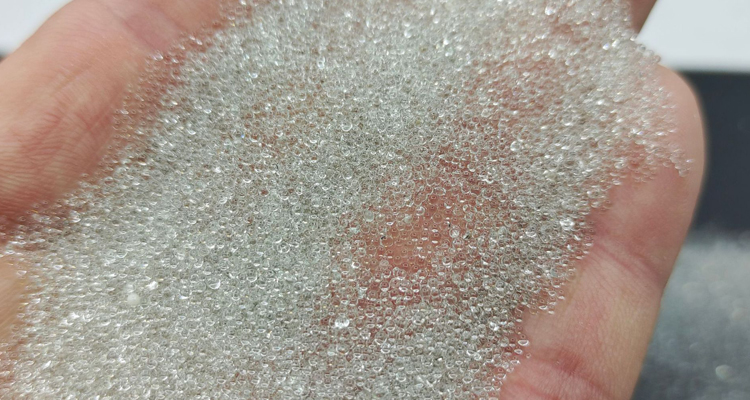
Steel Grit
Steel grit is more abrasive than aluminum oxide or glass beads. It’s suitable for brass parts with tougher contaminants that require thorough cleaning. Steel grit can create a textured surface finish and is often used for heavy-duty applications.
Walnut Shell
Walnut shell is a less abrasive option, often chosen for delicate brass components. It removes contaminants without causing damage and provides a unique matte finish. Walnut shell is biodegradable and environmentally friendly.
Choosing the Right Abrasive Media
To select the right abrasive media for brass sandblasting:
Define Your Goals: Determine the desired surface finish, texture, and the level of material removal required.
Match Abrasive Hardness: Choose abrasive media with a hardness level appropriate for brass to prevent excessive erosion.
Consider Contaminants: If you’re dealing with specific contaminants, choose media that effectively removes them without causing surface damage.
Testing and Experimentation
Before proceeding with sandblasting your entire brass parts, conduct tests on a small sample. This allows you to assess how different abrasive media affect the surface and choose the one that meets your expectations.
Conclusion
Choosing the right abrasive media is a critical decision in brass sandblasting. Whether you’re aiming for a polished gleam or a textured finish, the proper abrasive media can help you achieve your desired results. By understanding the characteristics of different abrasive media and considering the unique attributes of brass, you’ll be well-equipped to select the ideal media for your sandblasting project.
How much sand is usually sprayed on brass CNC parts?
Selecting the right grit size for sandblasting brass parts is crucial to achieving the desired surface texture and finish. The grit size directly influences the amount of material removal and the level of surface roughness. In this practical guide, we’ll delve into the factors that influence the choice of grit size for brass sandblasting and provide insights to help you make an informed decision.
brass is a versatile material often chosen for its aesthetic appeal. Sandblasting can enhance its texture and appearance, but selecting the appropriate grit size is vital to achieving the desired results. The grit size determines the aggressiveness of the sandblasting process and influences the final surface finish.
Understanding Grit Size
Grit size refers to the size of abrasive particles used in sandblasting. It’s typically measured in micrometers or mesh. Smaller grit sizes result in smoother surfaces, while larger grit sizes create coarser textures.
Factors Influencing Grit Size Selection
Choosing the right grit size for brass sandblasting depends on several factors:
Surface Finish: Determine whether you want a smooth, polished, or textured finish for the brass surface.
Material Hardness: brass is relatively soft, so choose grit sizes that won’t cause excessive material removal.
Contaminant Removal: Consider the type and thickness of contaminants to be removed from the brass surface.
Project Goals: Define your project goals, whether they involve thorough cleaning, texturing, or polishing.
brass Sandblasting Applications
The grit size you choose depends on the specific application of your brass parts:
Cleaning: Fine to medium grit sizes are suitable for removing contaminants and achieving a clean surface.
Texturing: Medium to coarse grit sizes create textured surfaces that can enhance aesthetics or provide better adhesion for coatings.
Polishing: Fine grit sizes are ideal for achieving a polished finish on brass parts.
Grit Size Recommendations
Fine Grits (240 to 600)
Fine grit sizes are best suited for polishing brass parts or achieving a smooth, matte finish. They’re effective in removing light contaminants and oxidation without altering the surface texture significantly.
Medium Grits (80 to 180)
Medium grit sizes strike a balance between material removal and surface texture. They can efficiently remove moderate contaminants and create a controlled textured finish.
Coarse Grits (20 to 40)
Coarse grit sizes are suitable for aggressive cleaning and heavy material removal. They create pronounced surface textures that are useful for coatings or specific aesthetic effects.
Testing and Experimentation
Before sandblasting your entire brass parts, perform tests on a small sample using different grit sizes. This experimentation will help you observe how different grit sizes affect the brass surface and assist in making an informed decision.
Conclusion
Selecting the right grit size is pivotal in achieving the desired results for sandblasting brass parts. Whether you’re aiming for a polished sheen, a controlled texture, or effective cleaning, the proper grit size will play a critical role. By considering the specific attributes of your brass parts and the goals of your project, you’ll be well-equipped to choose the optimal grit size for a successful sandblasting process.
Optimizing Sandblasting Pressure for CNC Machined brass Parts: Guidelines and Considerations
Determining the appropriate sandblasting pressure is a crucial factor in achieving the desired surface finish and texture for CNC machined brass parts. The pressure at which abrasive media is propelled onto the brass surface directly impacts the efficiency and outcome of the sandblasting process. In this guide, we’ll delve into the factors that influence the selection of sandblasting pressure and provide practical insights to help you achieve optimal results.
CNC machined brass parts often require surface treatment to enhance their texture and appearance. Sandblasting is a common technique used for this purpose, but achieving the right sandblasting pressure is essential for successful outcomes.
Understanding Sandblasting Pressure
Sandblasting pressure refers to the force at which abrasive media is propelled onto the brass surface. The pressure influences the rate of material removal, the depth of texture created, and the overall efficiency of the sandblasting process.
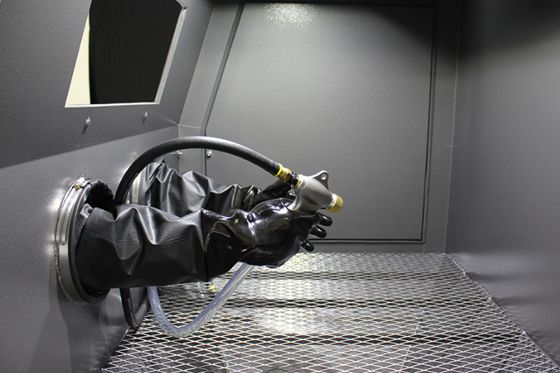
Factors Influencing Sandblasting Pressure
Choosing the appropriate sandblasting pressure involves considering various factors:
Material Hardness: brass is relatively soft, so excessive pressure can cause damage or distortions.
Abrasive Media: Different media require varying pressures for optimal performance.
Desired Surface Finish: Determine whether you want a smooth, textured, or polished finish for the brass surface.
Contaminant Removal: The type and thickness of contaminants affect the required pressure to effectively clean the surface.
Types of Sandblasting Equipment
There are various types of sandblasting equipment, including pressure pot systems, siphon blasters, and direct pressure blasters. Each type has its own pressure range capabilities and considerations.
Choosing the Right Pressure Range
The ideal pressure range for sandblasting brass parts typically falls between 40 psi to 80 psi (2.75 bar to 5.5 bar). However, this range can vary based on the type of abrasive media and the specific goals of your project.
Adjusting Pressure for brass Parts
Start with a lower pressure setting and gradually increase it while monitoring the impact on the brass surface. Avoid using excessive pressure, as it can cause material removal beyond the desired level and compromise the integrity of the part.
Balancing Efficiency and Surface Integrity
Achieving the right balance between efficient material removal and maintaining the integrity of the brass surface is crucial. Adjust the pressure based on the desired surface finish and the specific attributes of the brass parts.
Safety Considerations
Always prioritize safety when working with sandblasting equipment. Wear appropriate personal protective equipment, such as gloves, safety goggles, and a respirator, to protect yourself from abrasive particles and dust.
Testing and Calibration
Before sandblasting your entire brass parts, perform tests on a small sample using different pressure settings. This testing and calibration phase will help you determine the optimal pressure range for your specific project.
Conclusion
Selecting the right sandblasting pressure is a delicate balance between achieving efficient material removal and preserving the surface integrity of CNC machined brass parts. By considering factors such as material hardness, desired finish, and abrasive media, you can fine-tune the pressure settings to achieve optimal results. Remember to prioritize safety and perform testing before proceeding with the full sandblasting process.
Key Principles for Masking and Protecting Critical Areas of brass Parts
When sandblasting or undergoing any surface treatment process, ensuring that critical areas of brass parts are shielded and protected is essential to maintaining the integrity and functionality of the components. In this guide, we’ll explore key principles for effectively masking and safeguarding critical areas of brass parts during sandblasting or other surface treatment procedures.
brass parts often require meticulous surface treatment to achieve desired finishes and textures. However, protecting critical areas, such as delicate features or functional components, is crucial to prevent unintended damage during the treatment process.
Identifying Critical Areas
Before beginning any surface treatment, identify the critical areas that need protection. These areas could include intricate designs, sensitive components, or regions where material removal is not desired.
Choosing Masking Materials
Select masking materials that are compatible with brass and the sandblasting process. Common options include masking tape, adhesive-backed films, and specialized masking compounds.
Proper Application of Masks
Carefully apply masking materials to cover critical areas. Ensure that the masks adhere securely to the brass surface and form a tight seal to prevent abrasive particles from penetrating underneath.
Securing and Sealing
Pay attention to the edges of the masking materials to ensure they are firmly secured. Use additional adhesive or sealants if necessary to prevent any gaps that could allow abrasive particles to reach the protected areas.
Monitoring During Treatment
During the sandblasting or surface treatment process, periodically check the masks to ensure they remain in place. This is especially important if the treatment involves high pressure or aggressive abrasives.
Removing Masks and Post-Treatment Inspection
After the treatment is complete, carefully remove the masking materials. Inspect the treated brass parts for any signs of damage or unintended material removal in the critical areas.
Safety Considerations
Always prioritize safety when working with masking materials and sandblasting equipment. Wear appropriate personal protective equipment to shield yourself from abrasive particles and dust.
Benefits of Effective Masking
Preservation of Design: Effective masking ensures that intricate designs and fine details remain intact.
Prevention of Damage: Critical components are shielded from abrasive particles, preventing unintended damage.
Efficiency: By protecting critical areas, you can focus the sandblasting process where it’s needed most, reducing material and time wastage.
Conclusion
Masking and protecting critical areas of brass parts during sandblasting or other surface treatment procedures is an indispensable practice. By adhering to proper masking techniques, you can maintain the structural and aesthetic integrity of components while achieving the desired surface finish. Remember that effective masking not only preserves the quality of your brass parts but also contributes to the overall efficiency and success of the treatment process.
Choosing the Right Sandblasting Equipment: Factors to Consider
Selecting the appropriate sandblasting equipment is a crucial decision that significantly impacts the success of your surface treatment projects. The right equipment ensures efficient material removal, desired surface finishes, and overall project success. In this guide, we’ll explore key factors to consider when choosing sandblasting equipment for various applications.
Sandblasting equipment is designed to propel abrasive media onto surfaces to remove contaminants, create textures, or achieve desired finishes. Selecting the right equipment involves considering various factors that align with your project goals and requirements.
Understanding Sandblasting Equipment
Sandblasting equipment includes various components, such as a blasting chamber, abrasive media storage, pressure or suction systems, and controls for adjusting pressure and media flow. The equipment’s design and features vary based on the application and complexity of the project.
Factors Influencing Equipment Selection
Several factors play a role in choosing the right sandblasting equipment:
Type of Application: Determine whether you’re working on large-scale industrial projects, intricate components, or general surface cleaning.
Abrasive Media: Different equipment may be suited for specific types of abrasive media.
Surface Material: Consider the material of the surface to be treated (e.g., brass) and its sensitivity to abrasion.
Project Timeline: Evaluate the timeframe in which you need to complete your project.
Types of Sandblasting Equipment
There are various types of sandblasting equipment, including:
Pressure Pot Systems: These systems use compressed air to propel abrasive media. They offer versatility and efficiency for various applications.
Siphon Blasters: Siphon systems use air pressure to create a vacuum that draws abrasive media into the air stream. They’re suitable for lighter tasks.
Direct Pressure Blasters: These systems use higher pressure to propel abrasive media, making them effective for heavy-duty projects.
Project Size and Scale
Choose equipment that matches the size and scale of your project. Larger projects may require more powerful equipment to ensure efficient coverage.
Abrasive Media Compatibility
Ensure the chosen equipment is compatible with the abrasive media you plan to use. Different equipment may have limitations on the types of media they can handle.
Surface Finish Requirements
Consider the desired surface finish. Some equipment is better suited for creating specific textures or finishes.
Budget Considerations
Your budget will influence the type and quality of equipment you can afford. Balance your budget constraints with your project requirements.
Safety Features
Prioritize safety by selecting equipment with features such as proper ventilation, dust collection systems, and safety interlocks.
Ease of Use and Maintenance
Choose equipment that is user-friendly and easy to maintain. Complex equipment may require specialized training.
Conclusion
Choosing the right sandblasting equipment is a critical step toward achieving successful surface treatment outcomes. By considering factors such as the type of application, abrasive media, project size, and safety features, you can make an informed decision that aligns with your project goals. Remember that the right equipment not only ensures effective material removal and surface treatment but also contributes to the overall efficiency and quality of your projects.
Safety Measures for Sandblasting Brass: Ensuring a Secure Working Environment
Sandblasting brass parts can yield remarkable results, but it’s crucial to prioritize safety throughout the process. The abrasive nature of the procedure and potential exposure to dust and particles require careful consideration of safety measures. In this guide, we’ll outline essential safety precautions to ensure a secure working environment during brass sandblasting.
Sandblasting brass can transform its appearance, but the process involves risks that must be managed to protect both workers and the environment. Adhering to proper safety protocols is essential for successful and secure sandblasting operations.
Understanding Sandblasting Safety
Sandblasting generates airborne dust, abrasive particles, and noise. Implementing safety measures mitigates potential hazards and ensures a safe workplace.
Personal Protective Equipment (PPE)
Provide and require the use of appropriate PPE for all workers involved in sandblasting brass. This includes safety goggles, respirators, gloves, coveralls, and hearing protection.
Workspace Preparation
Designate a dedicated area for sandblasting with clear signage and barriers to prevent unauthorized access. Remove any combustible materials and ensure proper lighting.
Ventilation and Dust Control
Implement effective ventilation systems to remove dust and particles from the air. Regularly clean and maintain ventilation equipment to ensure optimal performance.
Equipment Inspection and Maintenance
Regularly inspect and maintain sandblasting equipment, including hoses, nozzles, and pressure regulators. Address any issues promptly to prevent accidents.
Handling Abrasive Media
Store abrasive media in appropriate containers and avoid direct exposure to skin and eyes. Use mechanical aids for lifting heavy bags to prevent strain.
Safe Operation Practices
Pressure Settings: Set appropriate pressure levels to prevent excessive material removal and potential damage to brass parts.
Nozzle Distance: Maintain a safe distance between the nozzle and brass parts to prevent unintentional overblasting.
Angle of Attack: Hold the nozzle at an appropriate angle to achieve even and consistent blasting results.
Emergency Preparedness
Have emergency procedures in place, including first aid kits, eyewash stations, and fire extinguishers. Train workers on how to respond to emergencies.
Employee Training
Provide thorough training to all personnel involved in sandblasting brass. Ensure they understand proper equipment usage, safety protocols, and emergency procedures.
Conclusion
Prioritizing safety is non-negotiable when sandblasting brass parts. By implementing comprehensive safety measures, providing adequate training, and fostering a safety-conscious culture, you create a secure environment for workers and minimize risks associated with the sandblasting process. Remember that a well-executed safety strategy not only protects individuals but also contributes to the overall efficiency and success of your brass sandblasting operations.
Determining Sandblasting Duration for Surface Treatment: A Comprehensive Guide
The duration of sandblasting, or the time required for surface treatment, is a critical factor that directly impacts the quality of results achieved. The right duration ensures effective material removal, desired surface texture, and overall project success. In this comprehensive guide, we’ll delve into the factors influencing sandblasting duration and provide practical insights to help you determine the optimal treatment time for various applications.
Sandblasting, a widely used surface treatment technique, involves propelling abrasive particles onto a surface to remove contaminants and achieve desired finishes. The duration of sandblasting plays a pivotal role in determining the extent of material removal and the final surface texture.
Understanding Sandblasting Duration
Sandblasting duration refers to the amount of time the abrasive media is directed onto the surface being treated. It’s crucial to strike a balance between effective material removal and preventing overblasting, which can result in unintended damage.
Factors Influencing Treatment Time
Several factors influence the duration of sandblasting:
Surface Material and Hardness: Softer materials require less time for effective material removal, while harder materials might need more time.
Type of Abrasive Media: Different abrasive media have varying cutting rates, affecting the time needed for material removal.
Contaminant Thickness: Thicker contaminants might necessitate longer treatment times to achieve thorough cleaning.
Desired Surface Finish: The desired finish, whether smooth, textured, or polished, affects the time required to achieve the desired outcome.
Sandblasting Equipment and Pressure: Higher pressure settings can lead to quicker material removal, but they also increase the risk of overblasting.
Surface Material and Hardness
Consider the hardness of the surface material, such as brass. Softer materials might require shorter treatment times to prevent excessive erosion.
Type of Abrasive Media
Different abrasive media, such as aluminum oxide or glass beads, have varying cutting rates. Adjust the treatment time accordingly.
Contaminant Thickness
Thicker contaminants, like heavy oxidation or coatings, might require longer treatment times to ensure complete removal.
Desired Surface Finish
The desired surface finish impacts treatment time. Achieving a smooth finish might require less time compared to creating a textured surface.
Sandblasting Equipment and Pressure
Higher pressure settings can lead to faster material removal. However, closely monitor the process to avoid overblasting.
Sample Testing and Calibration
Before treating the entire surface, perform sample tests with varying treatment durations to determine the optimal time for achieving desired results.
Monitoring the Process
During treatment, continuously monitor the progress by checking the surface and adjusting treatment time if necessary.
Avoiding Overblasting
Overblasting can lead to excessive material removal and surface damage. Always err on the side of caution to prevent this.
Conclusion
Determining the appropriate sandblasting duration is a nuanced process that requires consideration of various factors, including surface material, abrasive media, contaminant thickness, and desired finish. By conducting sample tests, monitoring the process, and prioritizing caution to avoid overblasting, you can achieve optimal results while maintaining the integrity of the treated surface. Remember that a well-calibrated treatment duration contributes to the success and quality of your sandblasting projects.
Post-Sandblasting Treatment: Enhancing and Protecting Treated Surfaces
After the sandblasting process, implementing appropriate post-treatment steps is essential to optimize the results, protect the treated surfaces, and ensure the longevity of the finish. In this guide, we’ll explore effective post-sandblasting treatments and practices that enhance the quality and durability of the treated surfaces.
Sandblasting is a powerful technique for surface treatment, but it exposes the treated surfaces to potential contaminants and environmental factors. Post-sandblasting treatment is crucial to enhance the treated surfaces, protect them from damage, and maintain their appearance over time.
Importance of Post-Sandblasting Treatment
Post-treatment steps are necessary to address several key aspects:
Contaminant Removal: Post-treatment cleaning removes residual abrasive particles and contaminants from the surface.
Surface Protection: Applying protective coatings and sealants shields the treated surfaces from corrosion, moisture, and environmental factors.
Surface Enhancement: Polishing and finishing techniques can further refine the surface texture and appearance.
Surface Cleaning and Inspection
Thoroughly clean the treated surfaces to remove any remaining abrasive particles or contaminants. Inspect the surface for uniformity and any signs of overblasting.
Surface Conditioning
Condition the treated surfaces using appropriate techniques to ensure they are ready for the next steps. This might involve sanding, buffing, or other surface refinement methods.
Protective Coatings and Sealants
Apply protective coatings or sealants to prevent corrosion and enhance the durability of the finish. Consider coatings that are compatible with the material and the intended use of the treated surface.
Surface Polishing and Finishing
Polishing the treated surface can achieve a smoother texture and a more refined appearance. This step is especially relevant for surfaces that require a polished or reflective finish.
Preventing Corrosion
brass and other metals are susceptible to corrosion. Implement preventive measures, such as applying anti-corrosion products or storing treated items in controlled environments.
Applying Clear Finishes
For brass parts, applying clear finishes can help maintain the natural color and appearance while providing an additional layer of protection against oxidation and environmental factors.
Regular Maintenance
Encourage regular maintenance of treated surfaces to prolong their lifespan. This might include routine cleaning, inspections, and touch-ups as needed.
Conclusion
Post-sandblasting treatment is a crucial phase that ensures the longevity, quality, and aesthetic appeal of treated surfaces. By addressing contamination, applying protective coatings, refining surface textures, and implementing preventive measures, you can achieve superior results that stand the test of time. Remember that post-treatment practices not only enhance the appearance of the treated surfaces but also contribute to their functional integrity and overall value.
Comparing Sandblasting with Other Surface Treatment Techniques
Sandblasting is a widely used surface treatment method, but it’s essential to understand how it compares to other techniques to choose the most suitable approach for your project. In this guide, we’ll compare sandblasting with other common surface treatment techniques, outlining their advantages, limitations, and appropriate applications.
Surface treatment techniques enhance the appearance, texture, and functionality of materials. Understanding how sandblasting compares to other methods helps you make informed decisions based on your project’s goals.
Sandblasting: Overview and Benefits
Advantages: Efficiently removes contaminants, coatings, and rust; creates various surface textures; prepares surfaces for coatings; versatile for different materials.
Limitations: Can be abrasive and may require careful control to prevent overblasting.
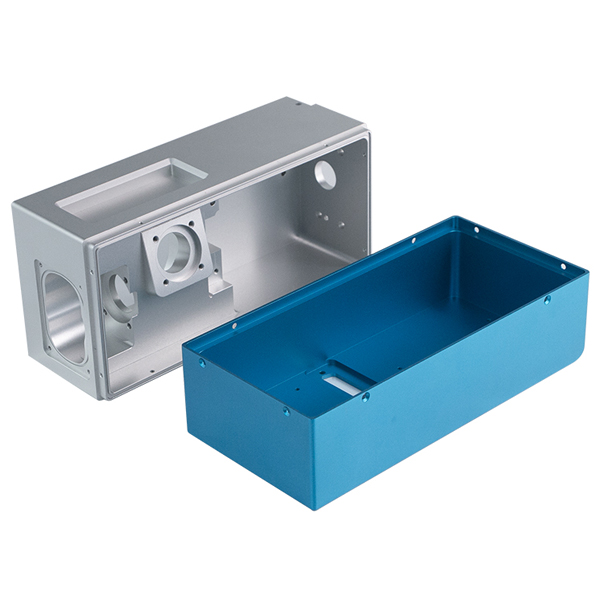
Chemical Etching
Advantages: Precisely etches intricate designs; can achieve fine details; suitable for decorative and functional purposes.
Limitations: Requires proper handling of chemicals; may have environmental concerns.
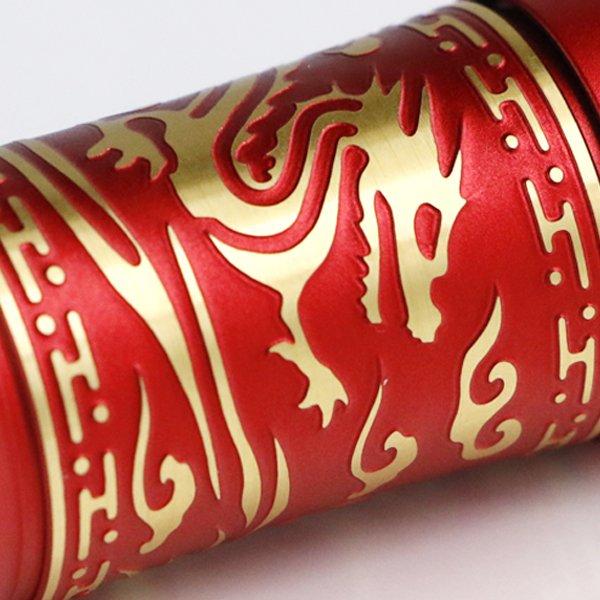
Mechanical Polishing
Advantages: Achieves smooth, reflective finishes; suitable for metals, plastics, and ceramics; enhances aesthetic appeal.
Limitations: Time-consuming for large surfaces; might not be suitable for highly textured finishes.
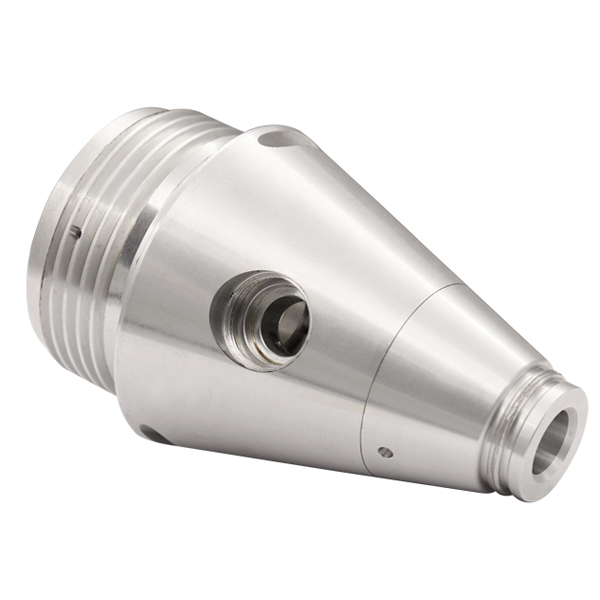
Electroplating
Advantages: Deposits thin metal coatings for aesthetics, corrosion resistance, and conductivity; offers uniform coverage.
Limitations: Requires specialized equipment; limited to certain metals.
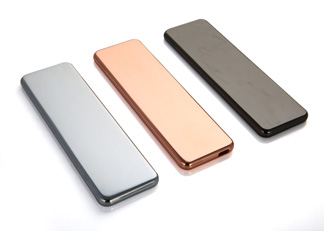
Powder Coating
Advantages: Provides durable and attractive finishes; offers a wide range of colors; resistant to chipping, scratching, and fading.
Limitations: Requires curing process; limited to heat-resistant materials.
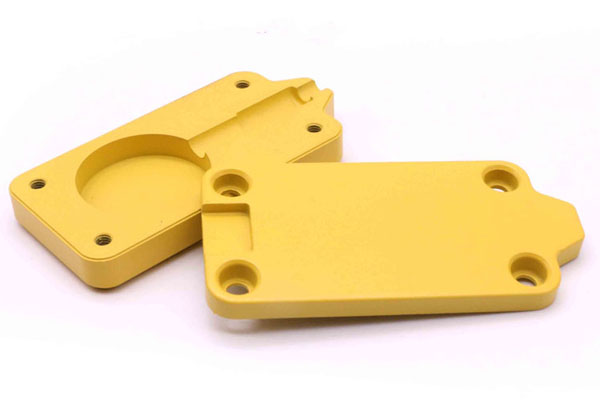
Ultrasonic Cleaning
Advantages: Removes contaminants from intricate parts; reaches crevices; minimizes physical contact.
Limitations: May not be effective for heavy coatings or rust.
Thermal Spraying
Advantages: Deposits protective coatings on various materials; enhances durability and corrosion resistance.
Limitations: Requires specialized equipment; may not achieve fine finishes.
Comparison Factors
Material Compatibility: Consider the material being treated and its reaction to the chosen method.
Surface Finish: Determine the desired finish, whether smooth, textured, or reflective.
Material Removal: Evaluate the amount of material that needs to be removed.
Environmental Impact: Consider the environmental implications of the chosen technique.
Choosing the Right Technique
Select the technique based on your project’s requirements:
Sandblasting: Ideal for removing coatings, rust, and achieving textured finishes.
Chemical Etching: Suitable for intricate designs and controlled material removal.
Mechanical Polishing: Best for achieving smooth and reflective finishes.
Electroplating: Offers protective and decorative coatings on metal surfaces.
Powder Coating: Provides durable and attractive finishes for heat-resistant materials.
Ultrasonic Cleaning: Effective for intricate parts with contaminants.
Thermal Spraying: Adds protective coatings for durability and corrosion resistance.
Conclusion
Comparing sandblasting with other surface treatment techniques helps you choose the method that aligns with your project’s goals. Consider the material, desired finish, environmental impact, and specific requirements to select the most suitable technique. By making informed decisions, you can achieve optimal results and enhance the quality and functionality of treated surfaces.
Testing Sandblasted CNC brass Parts: Equipment and Procedures
Testing sandblasted CNC brass parts is a crucial step to ensure the quality of the surface treatment process. By using appropriate testing equipment and procedures, you can verify the effectiveness of the sandblasting process and guarantee that the finished parts meet your desired specifications. In this guide, we’ll explore the testing procedures and equipment used for evaluating sandblasted brass parts.
Testing sandblasted CNC brass parts ensures that the desired surface finish, texture, and quality are achieved. Effective testing procedures provide valuable insights into the success of the sandblasting process and the performance of the treated parts.
Importance of Testing
Testing serves several purposes:
Quality Verification: Ensures that the sandblasting process meets the required standards.
Performance Assessment: Evaluates the durability, corrosion resistance, and adhesion of the treated surface.
Problem Detection: Identifies any issues, such as overblasting or uneven texture.
Visual Inspection
Perform a thorough visual inspection to check for any uneven texture, overblasting, or defects on the surface. Look for signs of material removal beyond the desired level.
Surface Roughness Measurement
Use a surface roughness tester to measure the roughness of the sandblasted surface. This provides quantitative data about the texture achieved and ensures it meets your specifications.
Adhesion Test
Perform an adhesion test using methods like tape pull or cross-cut testing. This evaluates how well the sandblasted surface adheres to coatings or finishes.
Thickness Measurement
Measure the thickness of any applied coatings or finishes using a thickness gauge. This ensures the consistency and uniformity of the applied layers.
Corrosion Resistance Test
Subject the sandblasted brass parts to a corrosion resistance test. This helps determine the effectiveness of the surface treatment in protecting against corrosion.
Microscopic Examination
Use a microscope to examine the sandblasted surface at a microscopic level. This can reveal any defects, irregularities, or surface damage that might not be visible to the naked eye.
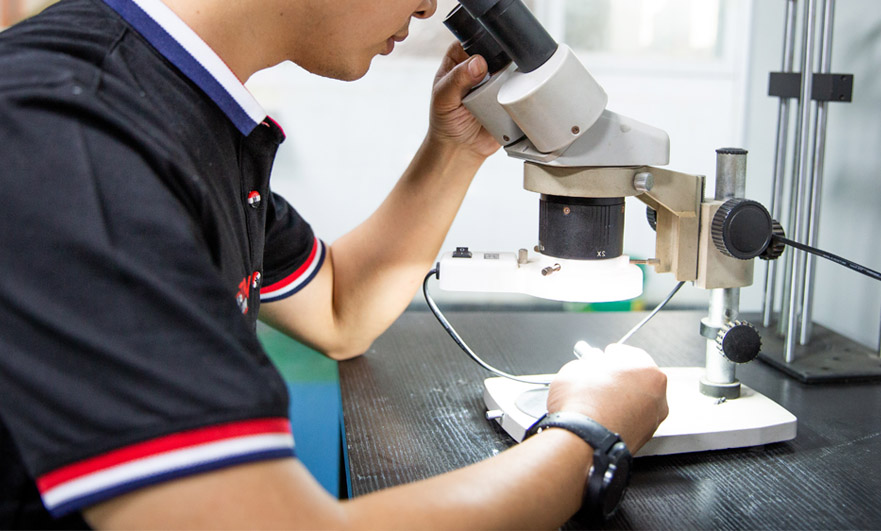
Conclusion
Testing sandblasted CNC brass parts is a critical step to ensure that the surface treatment process meets your quality standards and desired outcomes. By using a combination of visual inspection, surface roughness measurement, adhesion testing, thickness measurement, corrosion resistance testing, and microscopic examination, you can thoroughly evaluate the effectiveness of the sandblasting process and the quality of the finished parts. These testing procedures provide valuable insights that contribute to the success of your surface treatment projects.
Selecting brass Sandblasting Media: 5 Key Considerations
Choosing the right sandblasting media for brass surfaces is essential to achieve optimal results without compromising the integrity of the material. Selecting the appropriate abrasive media ensures efficient material removal and desired surface finishes. In this guide, we’ll outline five key considerations to keep in mind when selecting sandblasting media for brass surfaces.
Selecting the right sandblasting media for brass requires a balance between effective material removal and surface preservation. By considering these key factors, you can make an informed decision that aligns with your project goals.
Material Compatibility
Choose abrasive media that are compatible with brass. Avoid media that could react with brass, leading to chemical reactions or surface damage.
Abrasive Hardness
Select abrasive media with an appropriate hardness level. brass is relatively soft, so choosing media that are too abrasive could lead to excessive material removal or surface damage.
Desired Surface Finish
Determine the desired surface finish for your brass parts. Different abrasive media create various textures and finishes, so choose media that align with your aesthetic goals.
Contaminant Removal
Consider the type and thickness of contaminants on the brass surface. Select abrasive media that can effectively remove these contaminants without damaging the underlying brass.
Eco-Friendliness
Choose abrasive media that are environmentally friendly. Some media generate dust or waste that could pose environmental concerns, so opt for media that minimize these issues.
Conclusion
Selecting the right sandblasting media for brass surfaces requires careful consideration of factors such as material compatibility, abrasive hardness, desired surface finish, contaminant removal, and eco-friendliness. By making informed choices, you can achieve efficient material removal, desired surface finishes, and successful outcomes for your sandblasting projects on brass surfaces.
Applications of Sandblasting on Brass: Enhancing Aesthetics and Functionality
Sandblasting is a versatile surface treatment technique that finds numerous applications in enhancing the aesthetics and functionality of brass materials. From decorative items to industrial components, sandblasting can transform the appearance and texture of brass surfaces. In this guide, we’ll explore various applications of sandblasting on brass and how it contributes to different industries.
Sandblasting involves propelling abrasive particles onto a surface to create textures, remove contaminants, and achieve desired finishes. When applied to brass materials, sandblasting adds a new dimension to their appearance and functionality.
Decorative Items and Artworks
Sandblasting is extensively used to create intricate designs, patterns, and textures on brass decorative items and artworks. It imparts a unique visual appeal and tactile experience to these items, making them stand out.
Architectural Elements
Brass architectural elements, such as handrails, door handles, and signage, benefit from sandblasting. It enhances their visual appeal while providing durability against wear and corrosion.
Automotive and Aerospace Components
Sandblasting is applied to brass components in the automotive and aerospace industries to achieve specific surface textures or prepare parts for subsequent treatments like painting or coating.
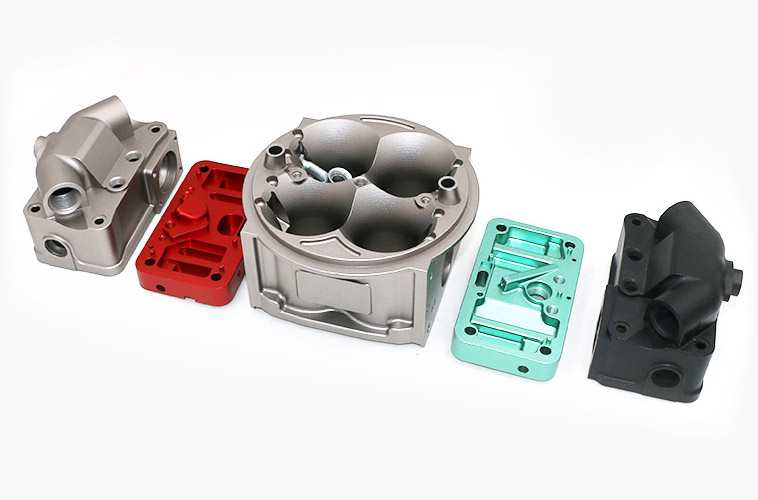
Electronics and Electrical Enclosures
Sandblasting can be used on brass electrical enclosures to create a uniform and aesthetically pleasing finish. It can also help improve heat dissipation in electronic components.
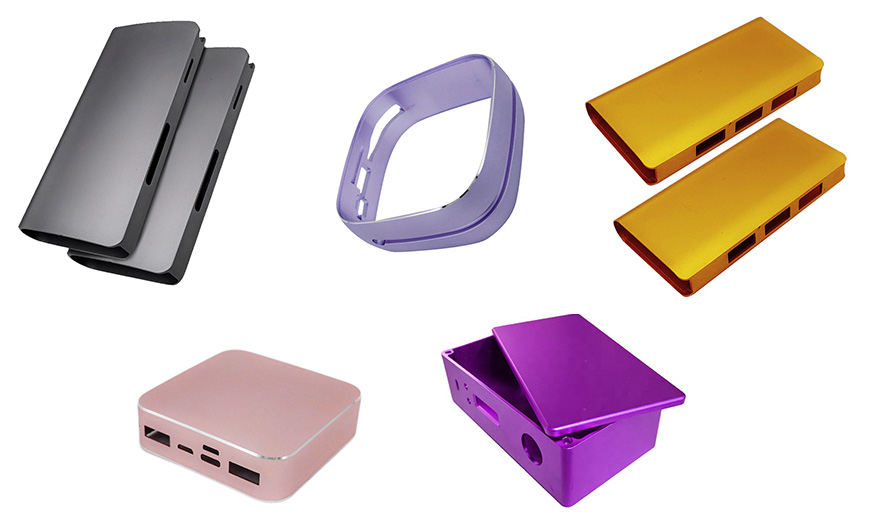
Industrial Machinery Parts
In the industrial sector, brass machinery parts are often sandblasted to remove rust, coatings, and contaminants. Sandblasting prepares these parts for further processing or assembly.
Firearm Accessories
Firearm accessories made of brass, such as triggers, sights, and magazine bases, can benefit from sandblasting. It enhances both the appearance and grip of these components.
Conclusion
Sandblasting on brass has a wide range of applications across various industries, from decorative items and artworks to architectural elements, automotive components, electronics enclosures, industrial machinery parts, and firearm accessories. By leveraging the unique capabilities of sandblasting, these industries can achieve enhanced aesthetics, improved functionality, and extended durability for brass materials. Whether it’s creating intricate designs, preparing surfaces for coatings, or improving grip, sandblasting plays a vital role in transforming brass materials into functional and visually appealing components.
Common Questions About Sandblasting Brass
Sandblasting brass is a widely used surface treatment technique that can raise various questions for those considering or using this method. In this guide, we’ll address some of the most common questions about sandblasting brass, providing clarity and insights into the process and its applications.
Sandblasting brass is a versatile process that can transform the appearance and texture of brass materials. Here, we’ll address questions that frequently arise about this technique.
What is Sandblasting?
Sandblasting is a surface treatment method that involves propelling abrasive particles at high speed onto a surface to remove contaminants, create textures, or achieve desired finishes.
Why is Sandblasting Used on Brass?
Sandblasting is used on brass to achieve various outcomes, including surface cleaning, texture creation, paint or coating preparation, and overall aesthetic enhancement.
Is Sandblasting Safe for Brass?
Yes, when done correctly and with appropriate abrasive media, sandblasting is safe for brass. Proper control of pressure and technique is essential to prevent damage.
What Abrasive Media is Suitable for Brass?
Abrasive media like glass beads, aluminum oxide, or garnet are often used for sandblasting brass. These media balance effective material removal without causing excessive damage.
How Does Sandblasting Affect Brass Appearance?
Sandblasting can create different surface textures on brass, ranging from a matte finish to a textured appearance, depending on the abrasive media and pressure used.
Can Sandblasting Remove Tarnish from Brass?
Yes, sandblasting can effectively remove tarnish and oxidation from brass surfaces, revealing the underlying clean and bright metal.
Is Surface Preparation Necessary Before Sandblasting?
Yes, surface preparation, including cleaning and degreasing, is crucial before sandblasting to ensure optimal adhesion of coatings and uniform results.
Can Sandblasting be Done on Intricate Brass Designs?
Yes, sandblasting can be applied to intricate brass designs, but precision control is necessary to avoid overblasting or damaging delicate features.
How to Protect Unwanted Areas during Sandblasting?
Unwanted areas can be protected using masking techniques, where certain areas are covered to prevent exposure to abrasive media.
Conclusion
Sandblasting brass involves careful consideration of techniques, media, and safety precautions. By understanding the process and addressing common questions, you can confidently utilize sandblasting to enhance the appearance and functionality of brass materials.